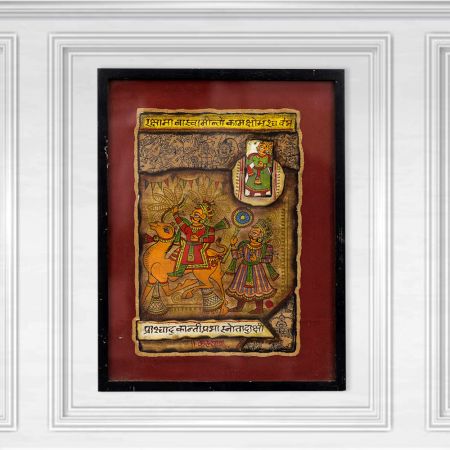Bring Royal Heritage Home with Handcrafted Rajasthani Canvas Art
Canvas Rajasthani Paintings carry the scent of soil, the silence of forts, and the sound of folk tales. They are more than brushwork. They are echoes of an era, hand-woven on fabric and stone. Each painting stands as a miniature mirror to India’s layered past where courtly love, royal hunts, divine interventions, and everyday folklore merge into one visual narrative. These paintings are rooted not in fleeting trends but in traditions that survived time. The richness of natural pigments, the stylized grace of elongated eyes, and the storytelling through spatial layering give them an identity distinct yet familiar. These are not just visuals, they are historical annotations made lyrical. When placed on canvas, these artworks invite not just gaze, but pause.
What Is A Canvas Rajasthani Painting?
A Canvas Rajasthani Painting is a hand-painted artwork originating from the royal courts of Rajasthan, traditionally crafted using natural pigments on handmade canvas or cloth. The style evolved from wall frescoes and miniature paintings into portable canvases that preserved royal narratives and spiritual iconography. Known for intricate detailing, flat perspective, and vibrant storytelling, it blends symbolism with stylization. The canvas version allows these timeless visuals to be hung, preserved, and reinterpreted across generations. These paintings often depict scenes from epics like the Ramayana, Krishna Leela, royal processions, and mythic love stories, all rendered with ornamental borders and vivid tonal harmony.
What Emotions Or Themes Do Rajasthani Paintings Commonly Portray?
Rajasthani paintings are emotional archives of a time that breathed through art. Love, longing, separation, valor, devotion, and spiritual ecstasy thread themselves through every composition. From Radha’s silent yearning to Krishna’s mischievous glances, from the thundering charge of a Rajput warrior to the still serenity of a Jain monk, the spectrum is vast. Rasik themes such as shringar and bhakti are common emotional pillars. Colors are emotionally coded, blue for divinity, red for passion, yellow for piety. These aren’t mere moods but emotional vocabularies rendered in brushstrokes, patterns, and perspective-less depth.
What Are The Most Recognized Styles In Rajasthani Painting (E.g., Mewar, Marwar, Kishangarh)?
Each Rajasthani region brought its own philosophy, technique, and visual dialect. Mewar is known for its earthy color palette, thick outlines, and bold narrative panels often illustrating epic texts. Marwar leans towards robust lines and vibrant contrast with a rustic, folk-driven energy. Kishangarh, on the other hand, is poetic. With its soft faces, almond eyes, and elongated necks, it romanticizes divine love, most notably seen in the iconic Bani Thani portraits. Bundi, Kota, and Bikaner schools added layers of nature, hunting scenes, and Mughal influence. Each style is a school in itself, rooted in patronage, geography, and sensibility.
Why Are Classical Rajasthani Paintings Still Revered In The Contemporary Art World?
Rajasthani paintings remain relevant because they transcend time. They do not just capture a moment, they record a feeling. Their layered iconography, ornamental motifs, and lyrical narratives make them adaptable to modern aesthetics. They represent a non-Western canon of fine art, one born from devotion and discipline rather than rebellion. In contemporary decor and curated art collections, they bring in texture, depth, and storytelling. They reflect a sense of rootedness in an age that often feels unanchored. More than nostalgia, their endurance lies in their ability to speak the language of symbolism in every era.
Techniques, Mediums and Artistic Tools for Canvas Rajasthani Paintings
In the hush of a palace studio, brushes made of squirrel hair met natural stone pigments. Traditional Rajasthani painters, or chitrakars, ground minerals, herbs, and shells to extract colors that wouldn’t just fade with time. Every brushstroke was precise. Every eye elongated. Every border patterned with paisleys or flora. Gold leaf often gilded the divine while black outlines held the soul of the figure. Canvas allowed for mobility and preservation. It became a storytelling surface that left the palace walls to enter homes, museums, and modern galleries. The essence of technique lies not in speed but in slow-building detail, where a single painting could take months.
How Were Traditional Rajasthani Paintings Created On Canvas?
Creating a Rajasthani painting on canvas involves a meticulous, sacred-like process. Artists begin by preparing the canvas with a mixture of chalk and natural gum to create a smooth, absorbent surface. Using fine brushes, sometimes made from a single hair, they sketch outlines in black ink. Natural dyes sourced from minerals like lapis lazuli, saffron, and malachite are applied in layers. Detailing is done last, often with burnished gold and silver to enhance divinity or ornamentation. The final step involves polishing with agate to bring out natural sheen. This process embodies patience, devotion, and perfectionism.
What Painting Mediums Are Commonly Used In Rajasthani Art (E.g., Natural Dyes, Gouache, Gold Leaf)?
Rajasthani paintings are renowned for their use of natural and mineral-based pigments. Traditional mediums include stone-ground lapis for blue, cinnabar for red, and orpiment for yellow. These pigments are mixed with gum arabic or neem resin as a binder. Gold leaf is used to elevate the divine or royal presence, while silver adds luster. Gouache is occasionally used, but in a highly controlled, matte form to maintain textural purity. The medium isn’t just a utility, it is a statement of reverence. Each stroke becomes archival, as the colors don’t just rest, they embed.
What Role Does Canvas, Handmade Paper, Or Fabric Play In Rajasthani Artistry?
The surface is as sacred as the subject. While handmade paper was common for miniatures, canvas provided a more durable and flexible medium, especially suited for larger compositions or export. Cotton canvas was often treated with organic base coats to increase longevity. Fabric allowed for fluidity in murals or scrolls, while canvas became a bridge between portability and preservation. Each material influenced the brushwork, absorption of pigment, and final finish. Canvas holds color with depth, allowing the intricate borders and symbolic figuration of Rajasthani art to fully unfold across generations.
Artistic Intent and Visual Storytelling of Canvas Rajasthani Paintings
Canvas Rajasthani paintings are not mere visual embellishments. They are storytelling devices painted with devotion, ritual, and precision. Each brushstroke carries the memory of a legend, a moral, or a historical truth. These works often echo the silences of palaces, the chants from temples, and the vibrancy of court life. Visual storytelling unfolds through linear narration, symbolic icons, and miniature frames within frames. Scenes from epics, local folklore, and divine visions are rendered with ornate detailing, invoking a layered tapestry of time and tale. The composition is tight, yet poetic, allowing the canvas to sing in silence.
What Stories Or Epics Do Rajasthani Paintings Aim To Convey?
Rajasthani paintings depict stories that are deeply woven into the region’s mythological, religious, and socio-cultural fabric. The Ramayana and Mahabharata often dominate the narrative frame, but so do tales of Radha Krishna, Pabuji, and historical figures like Maharana Pratap. The Kishangarh school is especially revered for its portrayal of the divine romance between Krishna and Radha, painting her not as a character but as an emotion. Artists don't simply recreate events. They interpret moments, Radha's longing, Krishna's mischief, or a king’s valour,through meticulous details, symbolic gestures, and narrative sequencing. These epics are condensed into single frames with multiple sub-scenes, often revealing the passage of time within one composition. The art speaks not just to the eye, but to memory, devotion, and cultural identity. Making every painting a miniature theatre of Indian mythology and regional pride.
How Do Artists Express Political, Spiritual, Or Cultural Narratives Through Rajasthani Art?
Rajasthani artists used their canvas to mirror the ideologies of their patrons. Kings, spiritual leaders, and temples. Political narratives are often embedded in court scenes, darbars, and battlefield depictions where regal posture, architectural elements, and costume distinguish power hierarchies. Spiritual themes dominate the visual field through divine iconography, mandala like symmetry, and detailed depictions of rituals. The brush often dances between devotion and diplomacy. Cultural elements emerge through festivals, clothing patterns, and regional landscapes. A wedding procession, a royal hunt, or Holi celebrations are not decorative choices. They document a time and space with anthropological weight. Through iconography like the chakra, conch, or peacock, artists signify divine protection, dharma, or transcendence. Thus, the artwork becomes a visual manuscript. A site of cultural documentation, political expression, and spiritual offering.
How Do Light, Shadow, And Color Palettes Influence The Mood Of Rajasthani Paintings?
Light in Rajasthani paintings is not rendered naturally but emotionally. Shadows are not literal but symbolic, creating contrast between good and evil, divine and mortal. The color palette is meticulously chosen. Gold leafing for divinity, indigo for depth, and red ochre for emotion and earth. The backgrounds are often flat yet layered in meaning, with saffron skies or emerald rivers evoking mood and season. A nighttime rendezvous between Radha and Krishna may be bathed in moonlit cool tones, whereas a royal court will burst with saturated reds, greens, and turquoises. These visual cues construct the mood, set the tone, and elevate the storytelling into a timeless experience. It’s less about realism and more about rasa, the aesthetic essence. The result? A painting that feels sung, not just seen.
Purchase, Collection and Investment of Canvas Rajasthani Paintings
To own a Rajasthani painting is to inherit a fragment of India’s aesthetic soul. But more than that, it is an act of preservation. Collectors often view these artworks not just as décor but as historical artefacts rendered on pigment and cloth. Each piece carries the patina of region, tradition, and artistic grammar. Investment here is less speculative and more spiritual, a gesture towards heritage revival. Authenticity, however, is key. With reproductions in circulation, one must learn to read the line quality, pigment use, and brushwork details. The value lies in its tactile soul, not just its visual appeal.
Where Can You Buy Authentic Or Reproduction Rajasthani Paintings?
Authentic Rajasthani paintings can be purchased from state-run emporiums like Rajasthali in Jaipur, private galleries across Udaipur, Bikaner, and Kishangarh, or directly from skilled artisan families who’ve passed down the craft for generations. Government art fairs like Surajkund Mela and online portals with GI tag certification are trusted sources. Reproductions, while aesthetically similar, lack the hand drawn fluidity and textured surface of originals. Always look for the brushstroke's individuality and the natural variation in color application. Artisans like those from the Bhilwara and Nathdwara regions create exceptional works. Reputable art dealers like IndianShelf often provide provenance papers, detailing the painting’s origin, artist lineage, and medium. Avoid machine printed versions, which may mimic the look but fail to deliver the spiritual resonance. Whether for decor or collection, choose sellers who treat the painting as heritage, not merchandise.
How Can You Verify The Authenticity Of A Traditional Rajasthani Artwork?
Authenticity lies in the details. True Rajasthani paintings exhibit uneven brushstrokes, natural pigment tonality, and delicate gold leaf work. Originals use mineral derived or vegetable based colors, making the surface rich and slightly grainy. Check for the wasli paper or canvas layering method, a sign of traditional preparation. Hand painted miniatures will have minor inconsistencies, subtle asymmetries in borders, freehand motifs, and texture depth. Certification from an art scholar, GI tagging, or provenance documentation further assures authenticity. Under magnification, printed versions appear pixelated, while hand painted works reveal intricate linework. Always ask about the artist, school, Kishangarh, Marwar, Mewar, and era. Reputable galleries provide transparency about the medium used. Natural colors, squirrel hair brushes, and traditional binder materials like gum arabic or tamarind seed paste. In short, the truth of the painting is not just in how it looks, but how it was made and who made it.
What Makes A Classical Rajasthani Painting A Worthwhile Investment Today?
A classical Rajasthani painting holds more than aesthetic or monetary value. It’s a portal into India's historical, cultural, and devotional landscapes. Unlike trend based artworks, these paintings appreciate over time due to their lineage, craftsmanship, and cultural gravitas. As machine made decor floods the market, handcrafted works gain prestige. Collectors, museums, and global auction houses increasingly seek out pieces with regional specificity and artisanal integrity. Investing in such a work supports a living tradition, sustains endangered art forms, and connects the collector to centuries old narratives. A painting from a known school, like Bundi or Kota, with detailed provenance, retains and increases in value. Moreover, these artworks evoke a timeless presence, elevating any interior from ordinary to meditative. They are not just assets. They are visual heirlooms with emotional returns.
Care, Framing and Preservation of Canvas Rajasthani Paintings
Preserving a Rajasthani canvas is an act of devotion. The painting, though silent, ages like language. Gracefully if attended to. Its fragility is sacred, demanding breathable materials, acid free mounts, and indirect lighting. The frame must not overshadow the artwork but extend its rhythm. Dust can dull the pigment, moisture can warp the canvas. Thus, care is not maintenance. It’s ritual. You do not just own a painting. You inherit its responsibility.
How Do You Properly Store and Maintain a Rajasthani Painting on Canvas?
Store the canvas in a dry, dark place, ideally at stable humidity, 40 to 55 percent, and temperature, around 21°C. Avoid rolling unless absolutely necessary. Flat storage between acid free boards is preferred. Keep away from direct sunlight, as natural pigments and gold leafing are vulnerable to UV damage. Use museum grade glass for framing to avoid moisture condensation. Regularly dust with a soft, dry microfiber cloth. Never use water or commercial cleaners. If damage appears, flaking, fading, or spotting, consult a professional conservator rather than attempting DIY fixes. Avoid storing near kitchens or bathrooms where fumes and humidity can impact the painting's integrity. Use linen hinges instead of tape and support the back of the canvas with archival board if displayed long term. Remember, maintenance of such art is not just physical. It’s cultural stewardship.
What Frames and Mounting Styles Best Complement Rajasthani Art Aesthetics?
A Rajasthani painting thrives in frames that are classic, understated, and culturally resonant. Choose teakwood, rosewood, or antique finished frames with soft gold or deep walnut undertones. Avoid contemporary floating frames or metallic edges. They clash with the artwork’s soul. Mount the painting on acid free mat boards with a narrow border to preserve breathing space. Traditional jharokha style wooden frames also enhance regional character without overwhelming the image. If the painting contains elaborate borders or miniature storytelling, a double mount can lend depth without distraction. Use non reflective, museum grade glass for protection and clarity. Avoid heavy embellishments on the frame, as the focus must remain on the line quality and pigment rhythm of the painting. A good frame doesn’t decorate. It anchors the art like a temple houses the deity.
Can Old Rajasthani Paintings Be Restored Without Losing Their Original Essence?
Yes, but only by experts trained in classical restoration methods. Restoration must be reversible, minimally invasive, and loyal to the original medium. Conservators use natural adhesives like wheat starch paste, match pigment hues with mineral based colors, and avoid modern synthetics that may alter texture. The aim is to stabilize, not repaint. Tears are mended with linen backings. Fading is addressed only when it disrupts the narrative. The paper or canvas is cleaned dry or with pH neutral solutions under expert supervision. Over restoration is a danger. It sterilizes the soul of the painting. The aging of pigments, subtle discolorations, or minute cracks are part of the painting’s biography. Respecting that history while reinforcing its longevity is the true art of restoration. A successful restoration allows the painting to whisper its stories again, not shout new ones.
What Are Common Damages That Traditional Paintings Suffer Over Time?
Common damages include pigment fading, canvas warping, paint flaking, and moisture stains. Exposure to light accelerates oxidation, dulling the vibrant natural dyes. Excess humidity causes mildew, while dryness leads to cracking. Insects like silverfish and termites target untreated canvas or paper. Improper framing can trap moisture, leading to yellowing and brittleness. Old adhesives may disintegrate, loosening the canvas or artwork. Mechanical pressure from rolling or folding can crease and eventually tear the fabric. Environmental pollutants, particularly sulfur or smoke, cause irreversible discoloration. These aren’t just surface level issues. They distort the visual language and historicity of the piece. Regular inspections, controlled environments, and timely conservation interventions are crucial. Remember, traditional paintings are like manuscripts. They breathe, age, and decay if ignored.
Home Decor, Styling & Mood Setting With Canvas Rajasthani Paintings
Canvas Rajasthani paintings carry the memory of palatial murals, their pigments echoing the opulence of bygone courts. When placed thoughtfully within a space, they do more than just adorn, they narrate. They create a dialogue between the viewer and the art, between silence and ornamentation. Be it the romance of Radha Krishna or the valor of Rajput warriors, each brushstroke shifts the mood, often grounding the room in regal serenity or storytelling drama. These paintings, steeped in miniature precision and ornate composition, act as cultural anchors, turning modern interiors into chambers of continuity, making tradition an everyday experience.
How Can Rajasthani Art Influence a Room’s Ambience or Cultural Tone?
Rajasthani paintings act like visual ragas, each piece tuned to a specific emotional resonance. A Kishangarh painting filled with Radha’s grace injects a sense of divine romance, while a Marwar battle scene energizes a room with bold, masculine vigor. The use of natural pigments, gold leaf, and intricate miniature style detailing enriches the space with craftsmanship and density. When mounted in the living room or a corridor, they create focal points that speak without volume. More than décor, they become portals, offering a moment of pause, a cultural sigh, a reflection. The traditional borders, symbolic motifs, and narrative expressions elevate the room from mere functionality to emotional storytelling steeped in Indian identity.
What Interior Styles Pair Well with Rajasthani Wall Art?
Rajasthani canvas art finds its most poetic dialogues within Bohemian, Eclectic Indian, and Colonial Revival interiors. These paintings also act as vibrant disruptors in Minimalist and Modern Rustic spaces, introducing intricate pattern and cultural depth into otherwise clean palettes. A Pichwai with its cow motifs and lotus designs complements a neutral mud wall, while a Mewar battle scene, framed in teakwood, pairs beautifully with brass lamps and block printed furnishings. Avoid overly saturated walls or neon lighting, let the painting breathe. Its organic pigments like lapis lazuli blue or vermilion red need natural light and calm tones to echo their full vibrancy.
How Do You Choose the Right Rajasthani Painting for a Living Room, Hallway, or Study?
Choosing the right canvas Rajasthani painting is about harmonizing narrative content, palette, and scale with the intended space. For the living room, opt for grandeur, a Darbar scene or Procession painting that visually anchors the room. Hallways benefit from vertical formats, floral borders, elephant processions, or Pichwais that draw the eye through movement. For the study, intimacy and detail are key, Bhakti themed works or mythological depictions in miniature form invite reflection and silence. Frame in carved wood or antique bronze to create harmony. Let lighting be soft, never harsh. Rajasthani art whispers, it doesn’t shout.
Cultural Impact & Historical Legacy of Canvas Rajasthani Paintings
Canvas Rajasthani paintings are not merely objects of beauty, they are testimonies of dynasties, faith, and aesthetics. Emerging from temple murals and palace walls, they traveled into scrolls, manuscripts, and finally canvas, evolving with time while retaining their rooted identity. These artworks served not just as decoration but as political tools, spiritual maps, and lineage records. Their layered storytelling, from the love of Radha and Krishna to heroic epics of Hammir and Prithviraj, ensured that history wasn’t lost but immortalized in art. Every pigment, mineral, organic, or metallic, was a decision of symbolism, every gesture encoded with rasa. It is in this visual language that the legacies of kings and the whispers of saints are preserved.
What Is the Historical Significance of Rajasthani Art Across Indian Dynasties?
Rajasthani art grew in tandem with royal patronage, especially under Rajput kingdoms like Mewar, Marwar, Bundi, and Kishangarh. It reflected their valor, religious devotion, and love for beauty. The Mughals influenced Rajasthani artists too, introducing realism and Persian techniques, yet the Rajputs retained their symbolic abstraction and bold color schemes. These paintings became chronicles, documenting coronations, festivals, wars, marriages, and even dreams. During the Bhakti movement, art became a devotional tool, with Krishna emerging as a central figure. Thus, Rajasthani art stands at the crossroads of religion, royalty, and resistance, a layered reflection of India's plural artistic legacy.
How Did Different Rajasthani Regions Contribute to the Painting Tradition?
Each region in Rajasthan cultivated a distinct visual grammar. Mewar offered bold lines and deeply spiritual themes. Marwar leaned into court scenes, elephants, and vibrant reds. Bundi introduced baroque flourish and monsoon aesthetics with its swaying trees and blue hues. Kishangarh, refined and romantic, perfected divine love through ethereal depictions of Radha with swan like necks and lotus eyes. Jaipur, influenced by the Mughals, leaned toward refined detailing and symmetry. Though different, all these schools shared a common rhythm of symbolism, flat perspective, and emotional depth, enriching the collective heritage of Indian painting.
Which Artists and Patron Kings Shaped the Evolution of Rajasthani Painting?
While many artists remained unnamed, their lineage of style speaks volumes. Masters like Sahibdin of the Mewar school introduced dramatic figuration and spiritual density in the 17th century. Nihal Chand of Kishangarh brought romantic elegance to Krishna paintings. Kings like Rana Kumbha, Raja Sawant Singh, and Raja Man Singh were not just patrons but connoisseurs, curating, preserving, and evolving art in their courts. These rulers established ateliers and nurtured generations of painters who passed down brush techniques, pigment knowledge, and narrative composition orally. The relationship between king and artist was one of mutual reverence, making art sacred and sovereign.
Canvas Rajasthani Paintings vs Other Art Forms
Rajasthani paintings inhabit a different world from modern and digital art. Where minimalism thrives in reduction, Rajasthani art celebrates abundance, of pattern, emotion, and symbol. Every frame is dense with meaning, every hue deliberate, every gesture stylized. Unlike the sleek surfaces of prints or the pixel perfect finish of digital art, Rajasthani canvases are tactile, textured with natural pigments, burnished gold, and layered washes. This art form does not aim to mimic life but rather evoke rasa, emotional flavor. It is less about realism and more about mythic resonance. It’s not just visual, it’s visceral.
How Are Rajasthani Paintings Different from Modern Abstract or Minimalist Art?
Rajasthani paintings are narrative rich and ornamental, while modern abstract and minimalist art lean toward conceptual minimalism. The former is rooted in Bhakti, Shringar, and Veer rasas, depicting gods, lovers, and warriors in intricate storytelling tableaux. Minimalist art, by contrast, seeks essence through emptiness, spaces, lines, textures without story. Where Rajasthani works emphasize saturated colors, decorative borders, and symbolic motifs, minimalist art thrives in restraint. Yet both forms deal with emotion, one through metaphor, the other through suggestion. Rajasthani art engages through history, minimalism often provokes through detachment.
What Sets Hand Painted Rajasthani Canvas Art Apart from Digital or Printed Replicas?
A hand painted Rajasthani canvas bears the soul of the artist, its uneven brushwork, textured layering, and pigment aging over time form a living relationship with space. Printed replicas, while visually close, lack depth, originality, and energy. Originals use natural dyes, often extracted from indigo, stone, or saffron, while prints use synthetic inks. Hand painted works develop a patina, absorbing light differently across decades. The process, from preparing canvas with glue and chalk to final burnishing, makes each painting unique. In contrast, prints remain static. Authentic Rajasthani canvas art is timeless, replicas are momentary reflections.
How Do Water Based Rajasthani Techniques Differ from Oil or Mixed Media Styles?
Traditional Rajasthani paintings use natural water based pigments bound with gum Arabic or plant resin. These allow layered washes, enabling luminosity and fine detailing. Artists work on a prepared surface, often primed with lime and organic glue. The technique involves building color from light to dark, unlike oil painting, which is richer in texture but slower to dry. Mixed media styles might blend charcoal, acrylics, and collage, which deviate from the disciplined palette and stylistic purity of Rajasthani art. Where oil offers opacity, Rajasthani watercolors offer translucence, a spiritual quality that lets light breathe through pigment.
Emotional & Symbolic Value of Canvas Rajasthani Paintings
Canvas Rajasthani paintings breathe with a spirit that lingers beyond pigment. Every stroke carries folklore, myths, divine symbolism, and emotional residue passed down generations. The intricately painted features, the palette rooted in natural mineral pigments, and the golden detailing often speak louder than any scripted word. These paintings are not just compositions, they are visual invocations of memory, ancestry, devotion, and heritage. From the regal depictions of Radha Krishna to the poised stance of Rajput warriors, they embody a profound stillness that invites contemplation. These artworks hold a sacred weight that transcends décor, they become rituals of remembrance, intention, and belonging.
Can Rajasthani Paintings Serve As Meaningful Gifts For Weddings Or Celebrations?
Absolutely. Gifting a Rajasthani painting for a wedding or cultural celebration is more than a token, it’s a gesture steeped in cultural continuity and spiritual resonance. Traditional Rajasthani paintings often feature themes like eternal love (Radha Krishna), royal elegance, and nature’s sacred cycles, all symbolic of union, beauty, and harmony. The visual language is not generic, it’s emotional and coded. Gifting such a piece is like handing someone a relic of divine storytelling. The hand painted detail, the textured canvas, and the intricacy echo commitment, attention, and presence, qualities mirrored in matrimonial bonds. Unlike mass produced gifts, a hand painted Rajasthani piece anchors itself in longevity and intention. Its presence on a wall is a continual blessing, an aesthetic blessing that watches silently over domestic life. In Indian tradition, art isn't separate from ritual. And such a painting becomes both, a timeless artifact and a deeply symbolic blessing of union.
What Emotional Value Do Heirloom Rajasthani Paintings Hold In Families?
Heirloom Rajasthani paintings are familial scriptures in pigment and line. They are rarely just décor, they are vessels of nostalgia, ancestral pride, and intimate memory. The muted reds, indigo washes, and faded gold in such a painting speak of weathered time, of days passed beneath old ceilings and stories whispered near oil lamps. These pieces often reflect family lineage, patronage, or religious affiliations, carrying the emotion of generations within their layered surfaces. Passing down a painting is akin to passing down a piece of soul, a visual echo of those who lived, loved, and prayed before us. In every craquelure or flaked border lies a memory, sometimes visible, sometimes felt. These paintings root us, offering not just beauty but a sense of continuity. They are what remains when people are gone, steadfast reminders of legacy, wrapped in miniature brushwork and spiritual symbolism that belong to no moment but all time.
Why Do People Feel A Deep Connection To Traditional Indian Art From Earlier Eras?
Traditional Indian art, especially Rajasthani paintings, evokes a visceral connection because it speaks in a visual dialect that merges the sacred and the personal. These aren’t just visual compositions, they are symbolic narratives, devotional objects, and aesthetic prayers. Each detail, a lotus blooming beneath a deity’s foot, a moonlit palace courtyard, a peacock beside a lover, evokes archetypes we subconsciously recognize. The mineral pigments and natural dyes whisper of earth, ritual, and craft. The art is meditative, almost rhythmic, inviting viewers to slow down, observe, and dissolve into the detail. In contrast to the speed of digital visuals, traditional Indian art offers stillness, texture, and a tactile visuality that modern audiences crave. We don’t just see it, we feel it. It returns us to something pure, handcrafted, and emotionally intact. A piece of Rajasthani painting isn’t just art, it’s a cultural pulse, beating steadily beneath layers of tradition.
Frequently Asked Questions (FAQs)
What Defines A Painting As A Canvas Rajasthani Masterpiece?
A true canvas Rajasthani masterpiece stands out through precision, symbolism, and fidelity to regional style. What defines it is not just the subject, be it a regal procession, divine couple, or mythological tableau, but the detailing, brush control, use of natural pigments, and compositional balance. The facial expressions, architectural motifs, and textile patterns are executed with near microscopic care, using squirrel hair brushes on primed fabric or canvas. Mewar paintings often use bright reds and strong outlines, while Kishangarh works lean into romance and elongated forms. Gold leaf, crushed gemstones, and natural dyes elevate its materiality. The background, often filled with flora fauna motifs or palace settings, must enhance, not overpower, the focal narrative. A masterpiece is born when technique, intent, and aesthetic vision converge, echoing devotion, mastery, and cultural depth. It isn't just art, it’s an offering, a poetic structure where time, skill, and tradition find form.
Can Traditional Rajasthani Painting Styles Be Authentically Recreated Today?
Yes, but with reverence and precision. Authentic recreation of traditional Rajasthani paintings requires more than mimicry, it demands a rigorous understanding of technique, color preparation, iconography, and spiritual purpose. Contemporary artists trained in miniature schools still grind their own pigments using traditional recipes, indigo for blues, powdered stones for reds, and real gold for detailing. Reproducing the styles of Bundi, Kota, or Jaipur isn't just about aesthetics, it's about embodying the ethos of the era. That includes the discipline of layering translucent washes, controlling brush pressure for minute facial features, and maintaining narrative integrity. When done with respect, these recreations hold immense cultural value. But mass market replications, those using synthetic pigments or printed canvases, lose the soul. Authenticity today lies in process and patience, not just end result. It’s a lineage one must step into, not imitate.
How Do You Protect Rajasthani Artwork From Light And Moisture Damage?
Preserving a Rajasthani canvas painting involves both science and care. Light, especially direct sunlight, accelerates pigment fading, particularly in natural dyes. UV filtering glass or museum quality acrylic framing is essential. Canvas should be mounted taut and kept away from fluctuating humidity, as moisture can warp the material and feed fungal growth. Avoid hanging near windows, kitchens, or bathrooms. Use acid free backing boards and keep frames sealed from dust and insects. If the painting is old or fragile, a dehumidifier in the room can help. For long term care, periodic inspection is vital, check for signs of cracking, blistering, or color dullness. Cleaning should never be done with water or commercial products. A soft, dry microfiber cloth for the frame is sufficient. And if in doubt, consult a conservator. Preservation isn't just protection, it's reverence. A Rajasthani painting, once damaged, loses not just color but part of its soul.
Are Classical Rajasthani Paintings Still Relevant In Today’s Art World?
Absolutely. Classical Rajasthani paintings are not relics, they’re breathing narratives that continue to shape both collectors and creators. In today’s fast paced, hyper digital visual culture, there’s a growing thirst for the handmade, the intimate, and the symbolic. These paintings offer all three. From gallery exhibitions in Paris and Tokyo to luxury interior spaces in Mumbai and New York, Rajasthani art stands as a testament to India’s visual richness. Their narrative depth, meticulous execution, and timeless themes make them simultaneously historic and contemporary. Many modern artists borrow from Rajasthani motifs, adapting their grammar into newer idioms, be it in digital animation, couture fashion, or even cinematic visual design. In short, these paintings have transcended their regional roots to become global cultural ambassadors. Their relevance lies not in nostalgia, but in their meditative quality, visual integrity, and storytelling depth that modern audiences, perhaps more than ever, are longing for.
Can Elements Of Rajasthani Painting Be Incorporated Into Modern Creative Practices?
Yes, and they already are. Rajasthani visual language with its vibrant color schemes, symbolic motifs, and narrative structure has inspired modern illustrators, graphic designers, filmmakers, textile artists, and muralists. The key lies in translation without dilution. For instance, contemporary artists may use traditional layouts and motifs (like jharokhas, palanquins, divine lovers) in digital compositions or reinterpret the linear perspective and ornamentation style in murals and installations. Some fuse Rajasthani miniature elements with modern surrealism or abstract forms. Even typography design and UI UX have begun borrowing its symmetry and ornamental language. However, the deeper fusion happens when the philosophy behind the art, devotion, storytelling, micro attention, guides the process, not just the visuals. Incorporation must be mindful, not decorative. When done with understanding, this synthesis can result in work that is both timeless and cutting edge, a true dialogue between legacy and innovation.
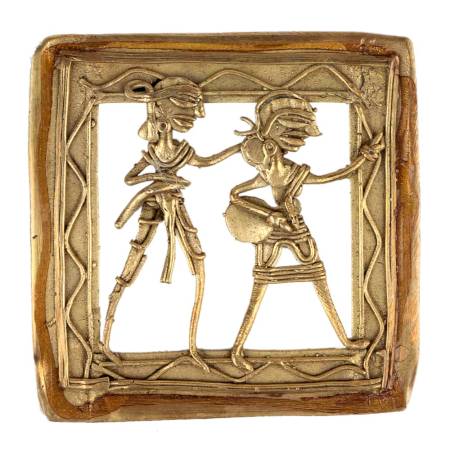
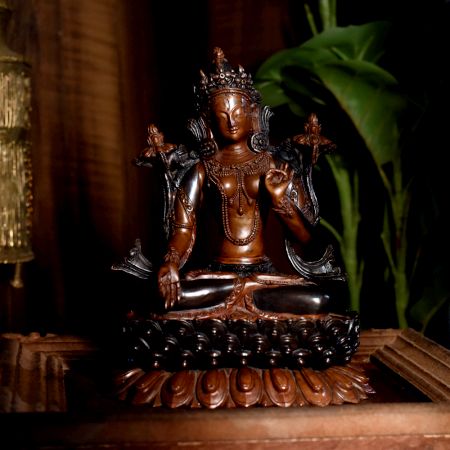
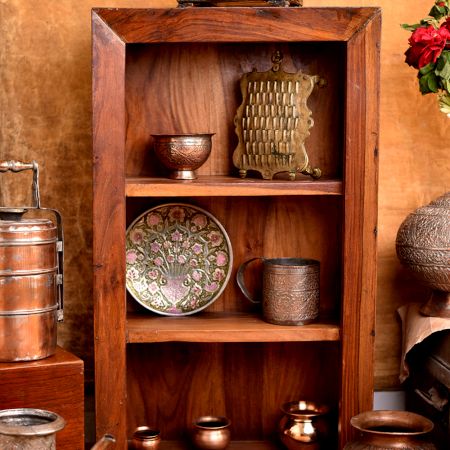
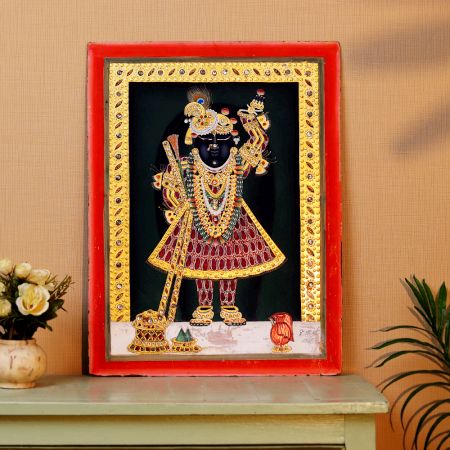
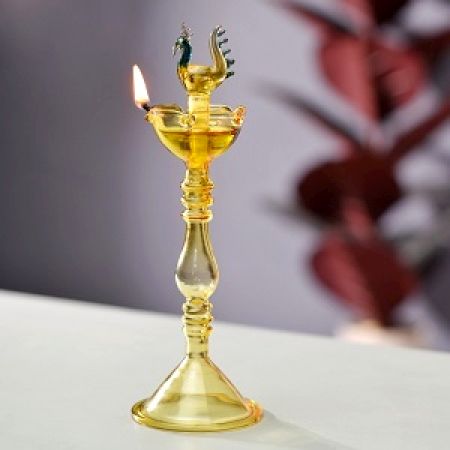

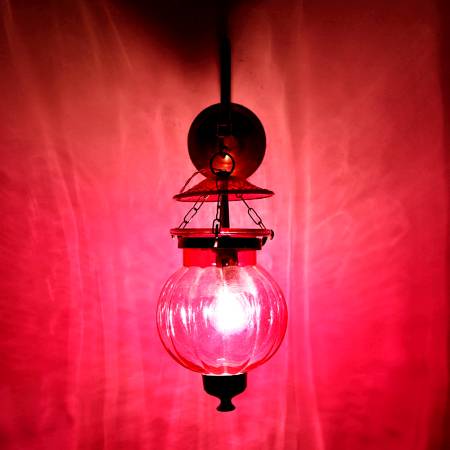

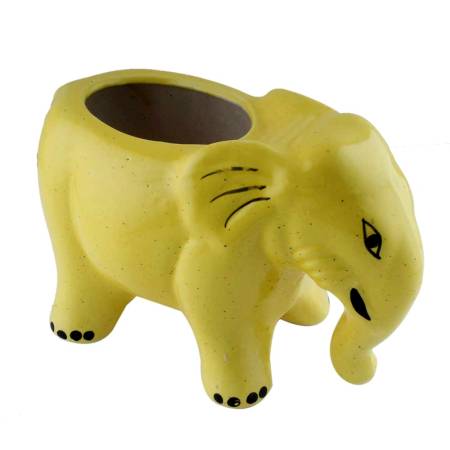
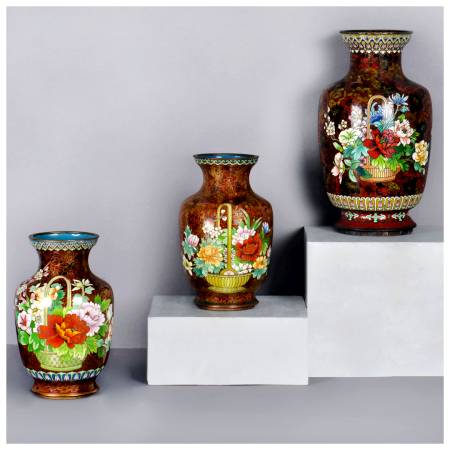
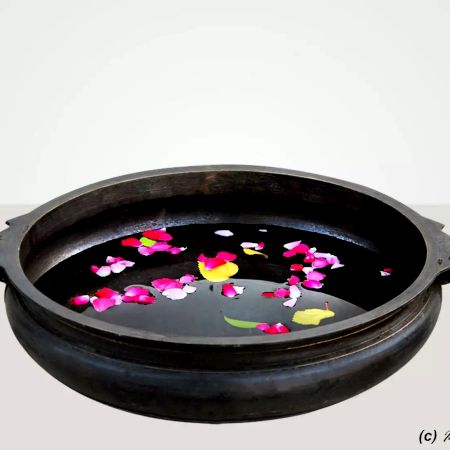
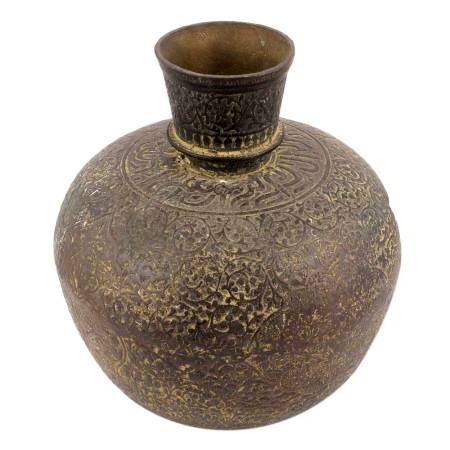
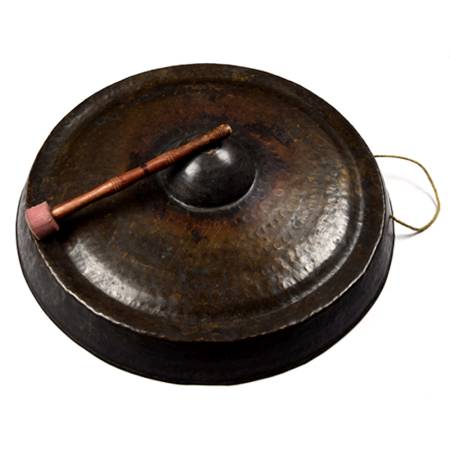
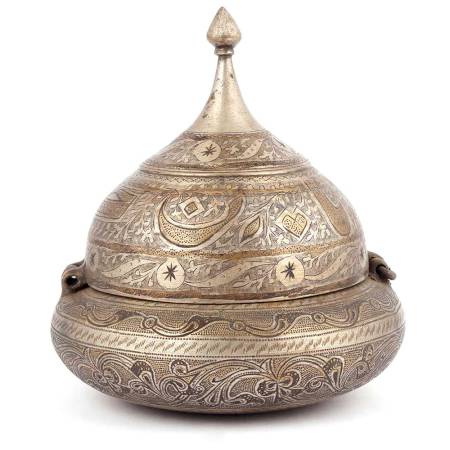



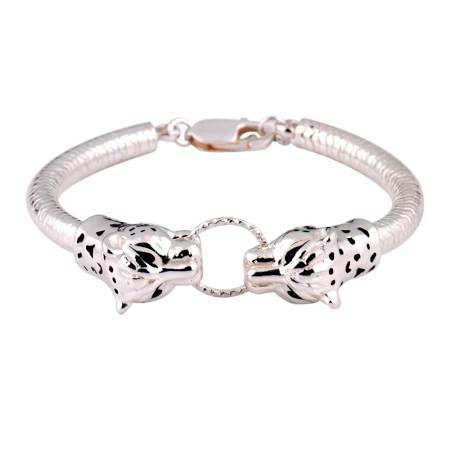
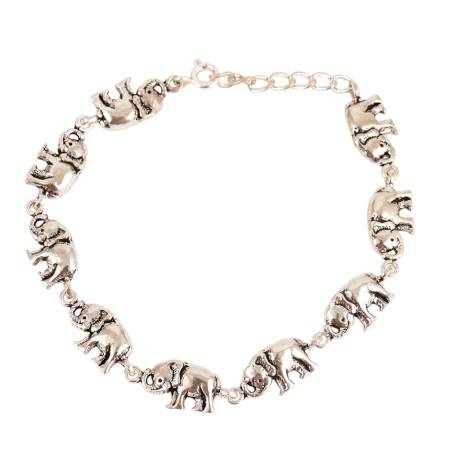


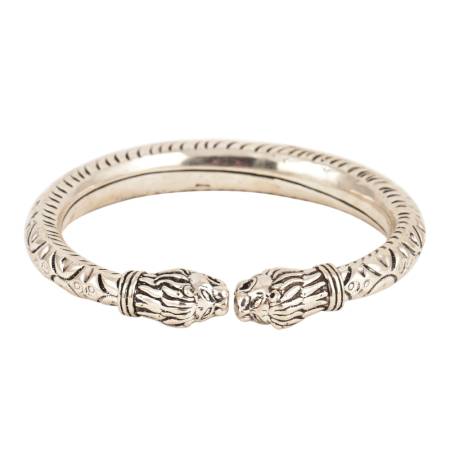
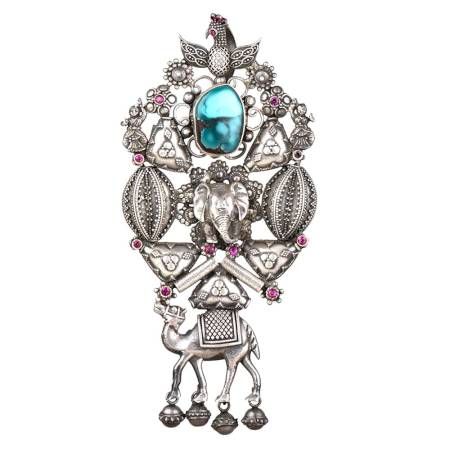
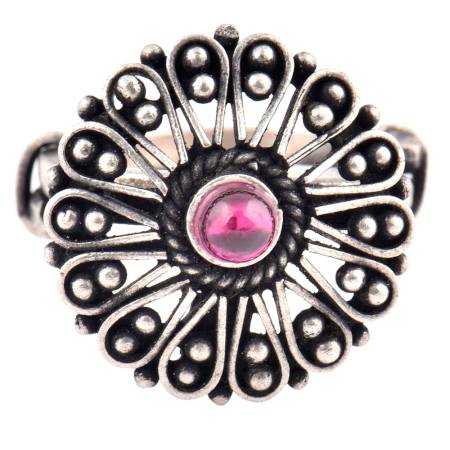
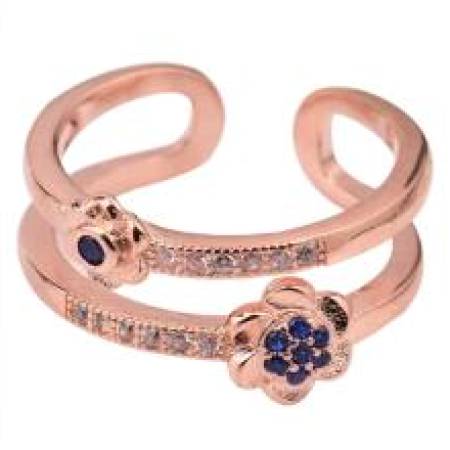


.jpg?ver=1.7)
.jpg?ver=1.7)



.JPG?ver=1.7)
.JPG?ver=1.7)
.JPG?ver=1.7)
.JPG?ver=1.7)
.JPG?ver=1.7)
.JPG?ver=1.7)
.JPG?ver=1.7)
.JPG?ver=1.7)
.JPG?ver=1.7)
.JPG?ver=1.7)
.JPG?ver=1.7)
.JPG?ver=1.7)
.JPG?ver=1.7)

